Welcome, budding architects and engineers, to a fun and innovative world of creativity and strategic thinking: building a tower using none other than two of our favorite household items – spaghetti and marshmallows!
A go-to activity for many STEM-focused classrooms and team-building sessions, this unique challenge pushes your critical thinking, fosters collaboration, and stimulates the imagination. Plus, who wouldn’t want to build with these classic pantry staples?
In this comprehensive guide, we’ll demystify the science behind these seemingly delicate structures, from the choice of materials to reinforcement techniques and troubleshooting common challenges.
By the end, you’ll have the knowledge and tips to create your very own towering masterpiece. So put on your thinking caps, channel your inner architect, and let’s get started!
Gathering the Materials: What You’ll Need to Get Started

First things first, you’ll need to gather your materials. The beauty of this task lies in its simplicity – all you need are some strands of spaghetti, a handful of marshmallows, and a dash of creativity. However, it’s not as simple as it sounds – the type and quality of your spaghetti and marshmallows will play a pivotal role in determining the success of your tower.
When choosing your materials, remember that spaghetti comes in varying thicknesses, and marshmallows can differ in size and firmness. Considering these characteristics can be the difference between a towering success and a collapsing calamity. The quantity will depend on how ambitious your project is, but it’s always better to have more than you need.
Of course, your most valuable tool is your mind. This activity is not just about constructing a tower; it’s about understanding the principles behind it, developing strategies, and learning from mistakes. So prepare your patience, resilience, and sense of humor – you’re going to need them!
The Basics
Before we delve into the intricacies of building your tower, let’s clarify the basic structure you’ll be creating. Simply put, you’ll be using spaghetti as your ‘building blocks’ – the columns and beams that give the tower its shape and strength. Meanwhile, the marshmallows act as connectors, joining the strands of spaghetti together. They’ll be your joints and nodes, the glue that holds your tower together.
A tower is a vertical structure, so height is a critical factor. However, as any architect will tell you, it’s not all about reaching for the sky. Stability and balance are equally, if not more, essential. A well-designed base and efficient load distribution can make your tower stand tall and proud instead of leaning like Pisa’s famous landmark.
Lastly, you’re not just building a tower; you’re also creating a story. Every decision you make, every problem you encounter, and every success you achieve will be part of this journey. It’s not only about the final product but the learning and joy that comes along the way. So remember to enjoy the process and be proud of your creation, no matter how it turns out.
Choosing the Right Spaghetti
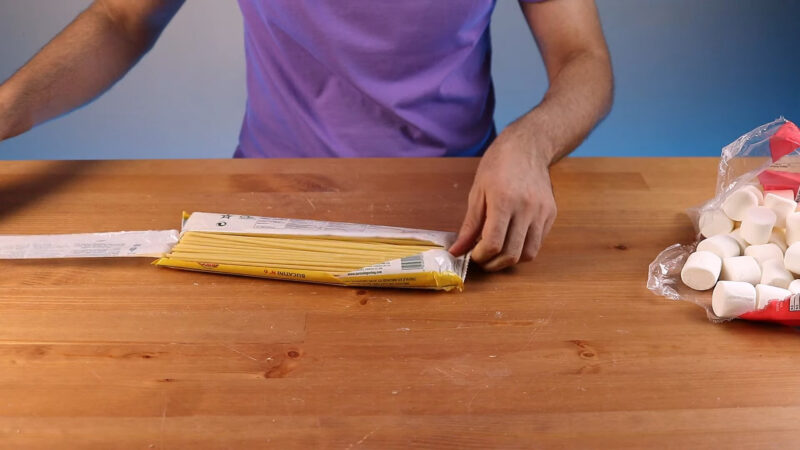
It may be tempting to grab the first box of spaghetti you see on the shelf but remember – not all spaghetti is created equal. The type of spaghetti you choose will directly impact the strength and stability of your tower. For this task, you’ll want to opt for regular, uncooked spaghetti. Avoid thin varieties like angel hair, which might not be strong enough to support a towering structure.
When it comes to length, longer strands provide more flexibility, allowing you to design higher and more complex structures. However, they can be more challenging to manage, particularly for younger builders. In contrast, shorter spaghetti strands are easier to handle but may limit the height of your tower. So choose wisely based on your tower goals and the age group involved.
Finally, handle your spaghetti with care! Remember that uncooked spaghetti is brittle and can snap easily. So always have extra on hand and treat your spaghetti beams with respect. They are the backbone of your marshmallow and spaghetti tower, after all.
Picking the Ideal Marshmallow for Tower Construction
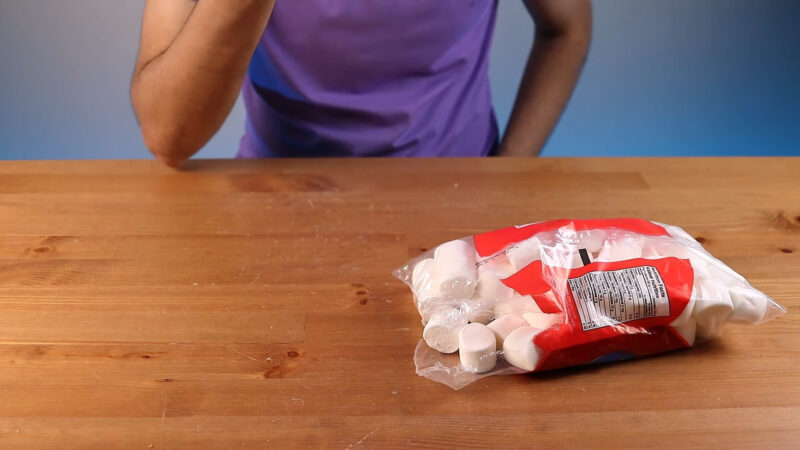
Now, let’s talk about marshmallows. They are more than just sugary treats – in this project, they’re the essential connectors holding your spaghetti framework together. They provide the flexibility needed for your tower to bear weight and withstand forces. But not all marshmallows are suitable for the task.
For tower construction, we recommend mini marshmallows. Their smaller size allows for more precise construction and reduces the weight on your spaghetti beams. The lighter the load, the taller and more stable your tower can be. However, if you’re building a larger model or need extra stability, regular-sized marshmallows may come in handy.
Ensure your marshmallows are fresh and soft. Stale marshmallows can become hard and brittle, making it difficult to insert the spaghetti. Likewise, marshmallows that are too soft can fail to hold the spaghetti firmly, resulting in a weak and unstable tower. Just like Goldilocks, you want your marshmallows to be just right.
Building a Solid Base for Your Tower
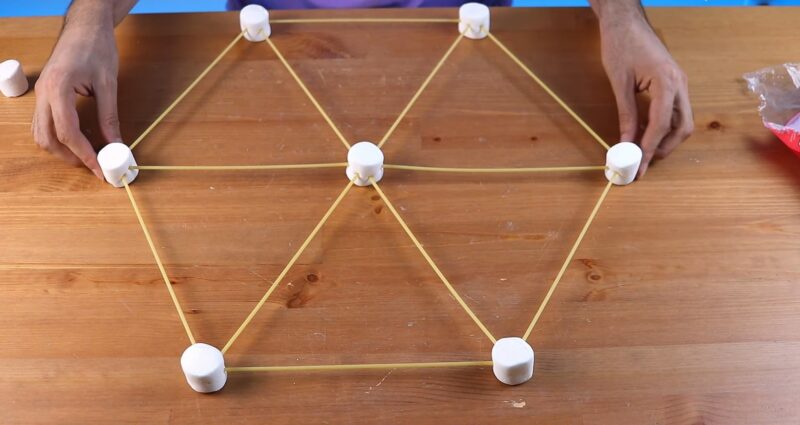
One of the most crucial elements in tower construction is the base. It acts as the foundation, distributing the weight of the tower and providing stability. Think of it like the roots of a tree, anchoring the structure to the ground.
Your base should be broader than the rest of your tower to effectively distribute the weight. A popular and efficient design is the pyramid or triangle base, which provides excellent stability. Be patient and take your time during this phase – a well-crafted base can significantly improve the success of your tower.
You should also consider the surface where you’ll build your tower. A non-slip, flat surface can prevent your tower from sliding or tipping over. You can even use cardboard or foam board as your building base to add an extra layer of stability.
Strategies for Stacking Spaghetti and Marshmallows
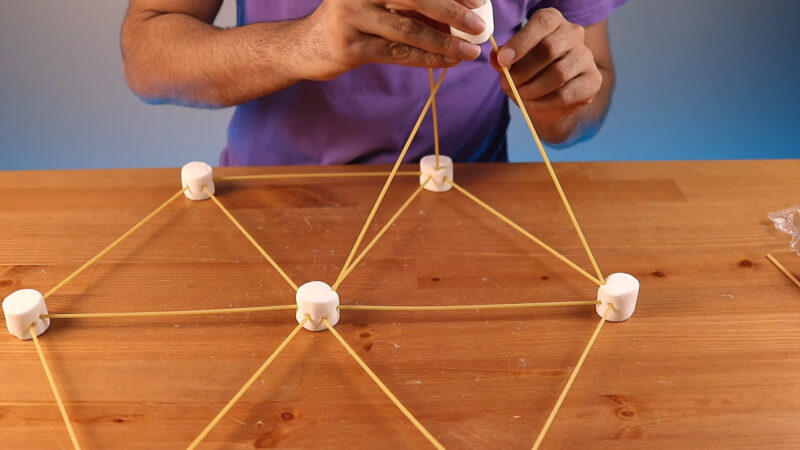
Once you have a solid base, it’s time to start stacking. This step requires a delicate balance between height and stability. It’s easy to focus on making your tower as tall as possible, but without the right strategies, you might end up with a wobbly structure that’s likely to collapse.
Use a consistent pattern while stacking, such as a series of triangles or squares. These shapes are not only aesthetically pleasing but also provide a balance of strength and flexibility. Make sure your marshmallows firmly grip the spaghetti and your spaghetti pieces are of even length for a balanced structure.
Remember, the higher you go, the more likely your tower is to sway or lean. To mitigate this, ensure each new layer aligns with the layer below. Continually check your tower from multiple angles to ensure it’s straight and adjust as necessary.
Reinforcement Techniques
Just like real-world structures, your spaghetti tower can benefit from reinforcement. Adding diagonal spaghetti beams across your vertical and horizontal ones can create a network of triangles. This shape distributes forces more effectively, providing superior stability and strength.
The cross-bracing technique, where you form an ‘X’ shape using spaghetti within your squares or rectangles, can also help stabilize your tower. Additionally, double up spaghetti strands in critical areas to handle extra load or pressure.
In terms of marshmallows, using two marshmallows at each joint can offer extra support, especially in load-bearing areas. Just be careful not to add too much weight unnecessarily – it’s a delicate balance.
Teamwork and Collaboration
If you’re working in a group, remember that teamwork and collaboration are vital to your success. Clear communication and well-defined roles can streamline the building process and minimize mishaps. You might have one person responsible for cutting spaghetti, another for connecting pieces, and another for checking and maintaining the tower’s balance.
Each team member’s ideas and insights are valuable and can lead to innovative solutions. Don’t be afraid to share your thoughts and try different strategies. This project is as much about building relationships and communication skills as it is about building towers.
Remember, every great structure, from the pyramids of Egypt to the International Space Station, was built through collaboration. With excellent teamwork, your spaghetti and marshmallow tower can be a grand success too.
Troubleshooting: Common Challenges
Building a spaghetti and marshmallow tower isn’t without its challenges. You might find your tower leaning, collapsing, or not achieving the height you desire. Don’t be disheartened – these obstacles are part of the learning process.
If your tower leans, check if your base is balanced and stable. It might need reinforcement, or your surface might not be level. If your tower collapses, consider the weight distribution. Perhaps some areas are bearing too much load, or your marshmallows aren’t gripping the spaghetti firmly enough. If the height is your challenge, review your spaghetti length and stacking strategy. Maybe a different pattern or spaghetti type could help.
In all cases, remember the mantra: test, learn, and iterate. Experiment with different techniques, learn from your failures and continue to refine your design. Your persistence will be rewarded.
Adding Height to Your Tower and Pushing the Limits
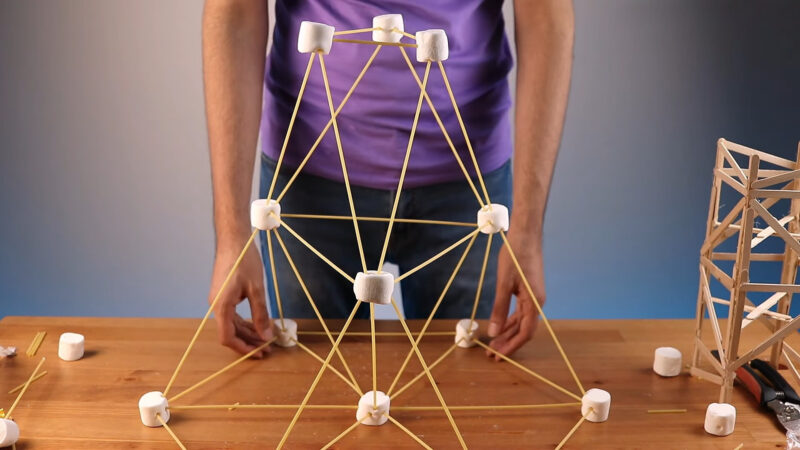
Once you’ve mastered the basics and overcome initial challenges, you may feel ready to push your tower’s height limits. This stage is where your creativity and problem-solving skills truly shine. But remember, the key to a taller tower is not merely adding more spaghetti and marshmallows. It’s about optimizing your design and making strategic adjustments.
One strategy to add height is to gradually decrease the width of each layer as you build up, creating a pyramid-like structure. This technique allows for a more stable distribution of weight. You can also experiment with using spaghetti strands of different lengths for different sections of your tower.
Don’t be afraid to think outside the box and try unorthodox methods. Maybe you can create interlocking layers for added stability or use marshmallows in unusual ways to act as counterweights. The sky’s the limit, so push your boundaries and see how high you can go!
Final Words
Building a spaghetti and marshmallow tower is a fascinating journey of exploration, experimentation, and creativity. It’s a hands-on way to understand the basic principles of engineering and architecture and a fun, engaging challenge that fosters problem-solving and teamwork skills.
Whether your tower stands tall or topples over, remember to celebrate your efforts and enjoy the process. After all, some of the world’s most remarkable structures didn’t come to fruition without a few stumbling blocks. Each attempt brings you one step closer to becoming a master spaghetti-marshmallow architect.







